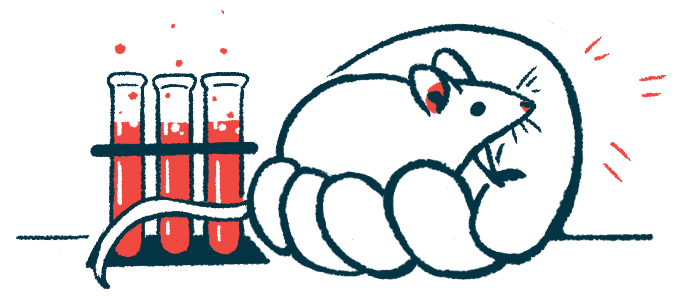Blocking HIF2 protein may promote lung repair in IPF: Mouse study
US researcher says such an approach has 'potential to be disease-modifying'

Inhibiting the HIF2 protein — fully, hypoxia-inducible factor 2 — was found to ease scarring in a mouse model of lung injury and could be a promising therapeutic strategy for treating idiopathic pulmonary fibrosis (IPF), according to the results of new preclinical research.
In the lab, a team of U.S. scientists identified that HIF signaling was overly active in abnormal airway cells from IPF patients. Its inhibition in mouse models of lung injury eased scarring and promoted lung repair, the new data show.
“The most exciting part of this work … is that it demonstrates a new therapeutic approach with the potential to be disease-modifying for IPF,” Scott McCall, MD, PhD, an instructor in medicine at Vanderbilt University Medical Center (VUMC) in Tennessee and the study’s first author, said in a university news story.
The work was done by researchers at VUMC and the University of Michigan Medical School, and is part of a collaboration with the Translational Genomics Research Institute (TGen) in Phoenix that’s spanned 10 years, per the release.
The study, “Hypoxia-inducible factor 2 regulates alveolar regeneration after repetitive injury in three-dimensional cellular and in vivo models,” was published in Science Translational Medicine.
Strides made in IPF research, but key questions remain
As with other forms of pulmonary fibrosis, IPF is characterized by progressively worsening inflammation and scarring, or fibrosis, in the lung epithelium — the protective cellular layer of the airways. Ultimately, alveoli, which are the tiny sacs responsible for gas exchange in the lungs, become damaged, leading to lung function decline and symptoms such as shortness of breath, cough, and fatigue.
“Patients with IPF suffer from severe cough and progressive shortness of breath,” McCall said. “Even today, most will require lung transplant surgery, or they will succumb to their disease.”
Treatment options for IPF remain limited, in part because scientists are still trying to understand the cellular and molecular changes that drive the disease.
Evidence suggests that, over time, repeated epithelial injury and an inability for alveoli to be properly repaired together drive the accumulation of abnormal epithelial cell populations that promote scarring.
In an earlier study led by TGen researchers, a team of scientists examined genetic sequencing data from lung cells taken from pulmonary fibrosis patients. The team identified abnormal epithelial cell populations that expressed, or produced, high levels of collagen and other substances that normally form scar tissue. According to the scientists, these cells may drive progressive fibrosis in lung disease.
Still, the mechanisms that enable these aberrant cells to emerge and persist in the lungs — and whether they can be targeted therapeutically — have not been explored.
“Through the past decade, we have learned a great deal about how the cellular makeup of the lung changes in patients with IPF,” said Jonathan Kropski, MD, an associate professor of medicine at VUMC and one of the study’s senior authors. “But we were still left with … can these changes be prevented or reversed?”
To try to answer that question, the scientists from VUMC and Michigan revisited gene activity datasets from IPF patients and a mouse model of repeated lung injury.
Inhibiting HIF2A may work to promote lung repair in IPF, per researchers
The team found that the abnormal epithelial cells associated with the lung disease exhibited persistent activation of HIF signaling. HIFs are a group of proteins involved in cellular responses to changing oxygen levels.
Particularly, IPF-related abnormal epithelial cells showed signs of increased activity of HIF2A.
In the mouse model of repeated lung injury, deletion of the gene encoding HIF2A from airway cells eased fibrosis, reduced the abnormal appearance of epithelial cells, and promoted alveolar repair. Similar benefits were observed when a small molecule HIF2 inhibitor, called PT-2385, was administered to the animals.
These studies showed … that targeted HIF2 inhibition may represent an effective therapeutic strategy to promote [lung] repair in IPF.
To verify their findings, the scientists also developed lung organoids — three-dimensional mini-organs grown in cell culture — from human cells. Treatment with PT-2385 in the organoids boosted alveolar cell maturation and prevented abnormal epithelial cells from growing.
“Together, these studies showed that HIF2 activation drives the emergence of aberrant epithelial populations after repetitive injury and that targeted HIF2 inhibition may represent an effective therapeutic strategy to promote functional alveolar repair in IPF and other interstitial lung diseases,” the researchers wrote.
This work was funded in part by grants from the National Institutes of Health/National Heart, Lung, and Blood Institute, and supported by the U.S. Department of Veterans Affairs, the Vanderbilt Faculty Research Scholars program, the Pulmonary Fibrosis Foundation, and the Francis Family Foundation.









